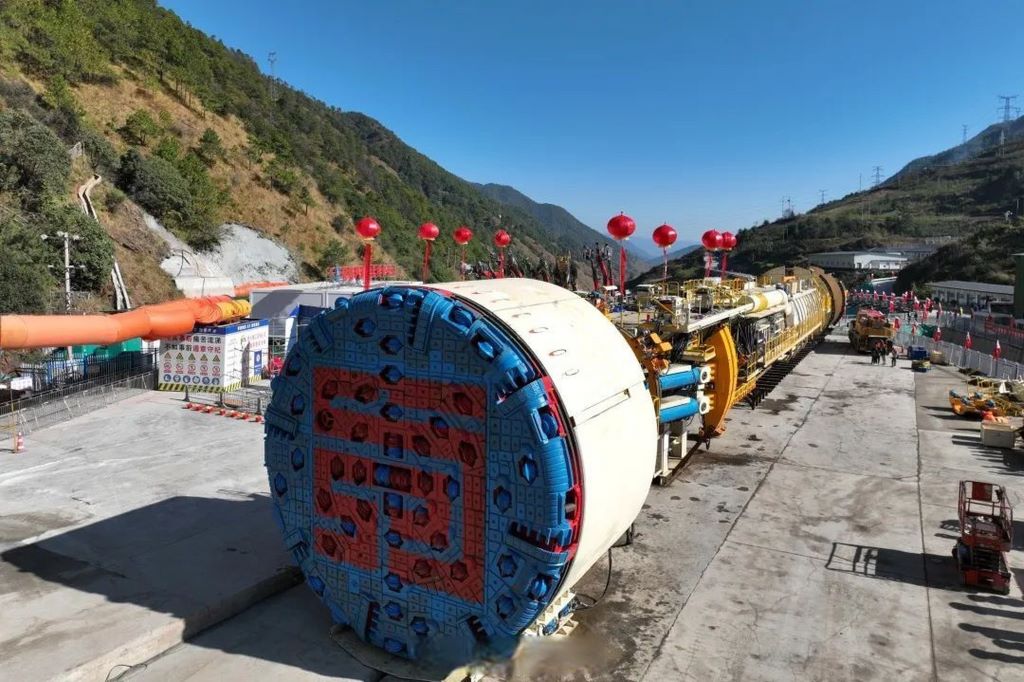The full-face tunnel boring machine (TBM) is the core equipment of modern tunnel engineering and is known as the "underground aircraft carrier". Through highly mechanized operation methods, it realizes the integrated construction of tunnel excavation, soil transportation, and support and hole formation, greatly improving the efficiency and safety of the project.

Core technical principle
The core component of TBM is the front giant cutter head, which can reach a diameter of more than 15 meters and is equipped with dozens to hundreds of high-strength alloy rollers. The cutter head presses the rock wall with hundreds of tons of thrust and crushes the rock by rotating cutting. The synchronous support system (such as hydraulic support shoes or segment assembly) instantly reinforces the tunnel wall to form a stable structure. The intelligent guidance system monitors the excavation trajectory in real time, and the accuracy error can be controlled at the millimeter level.
Classification and adaptability
Hard rock TBM: For hard strata such as granite and sandstone, it adopts an open structure, and the cutter head is equipped with wedge-shaped rollers with a thrust of thousands of tons. Typical cases include the Gansu Yintao Project, where a single machine excavates more than a kilometer per month.
Shield machine (soft soil TBM): suitable for urban silt and sandy soil layers, equipped with closed pressure chamber and screw conveyor to maintain the stability of the excavation surface. A 6.6-meter diameter earth pressure balance shield was used in the Shanghai Metro Line 14 project to successfully pass through dense buildings.
Major engineering applications
Transportation infrastructure: The Guanjiao Tunnel of the Qinghai-Tibet Railway (China's longest railway tunnel) uses a double shield TBM to break through the problem of high-altitude stress rock burst.
Water conservancy project: The Xianglushan Tunnel of the Yunnan Central Water Diversion Project, the TBM achieved an average daily excavation of 30 meters in the fault zone, and the efficiency is 5 times that of the traditional drilling and blasting method.
Urban pipe network: The Moscow Metro Ring Line uses a Chinese-made 11-meter shield machine to pass through historical buildings with zero settlement.
Technical breakthrough direction
Adaptation to composite formations: Develop variable diameter cutterheads (such as the China Railway Equipment "Funing" which can be adjusted between 6-7 meters) to cope with alternating soft and hard formations.
Green energy saving: The energy consumption of the cutterhead drive system is reduced by 30%, and the resource utilization rate of slag reaches 85% (such as the Shenzhen Chunfeng Tunnel project).
Intelligent excavation: Equipped with an AI geological prediction system (such as the "Jinghua" of China Railway Construction Heavy Industry), risks such as caves can be identified in advance, and the decision-making response time is shortened to 5 seconds.
The rise of China's smart manufacturing
Domestic TBMs have occupied 65% of the global market share (customs data in 2023), and companies such as China Railway Equipment and China Railway Construction Heavy Industry have achieved the autonomy of 16-meter-class ultra-large diameter shield machines. In the cross-river tunnel of the China-Russia East Line Natural Gas Pipeline, domestic TBMs set a world record of 72 meters of excavation per day.
Safety and environmental protection value
Closed construction keeps the dust concentration below 1mg/m³ and the noise is controlled within 85 decibels. In the Guangzhou Pearl River Delta Water Resources Allocation Project, the 2.8 million cubic meters of slag generated by TBMs were all converted into roadbed fillers, reducing the land use of the abandoned soil field by 500 acres.
As a "powerful tool of a great country", the evolution of TBMs reflects the leapfrog development of modern engineering technology. With the in-depth application of technologies such as intelligent sensing and digital twins, TBM will play a more critical role in underground space development in the future and provide basic support for the construction of smart cities.





